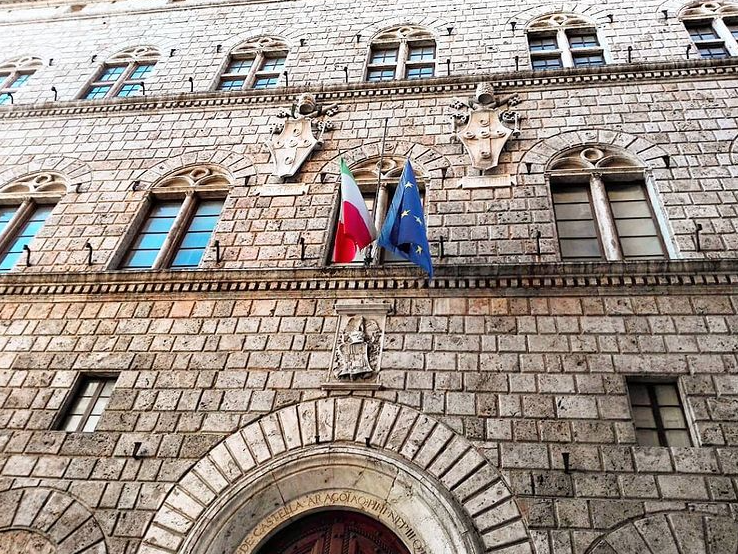Museum Biccherne
Palazzo Piccolomini, Museum Biccherne today, is just a few steps from Palazzo Publico and Piazza del Campo to the northeast, on the first block to the right of the Piazza, as we face towards Fonte Gaia, on the corner of Via Rinaldini and Banchi di Sotto, in front of the Università (old Jesuit college), lies one of the best specimens of Renaissance architecture in Siena, the Palazzo Piccolomini.
The palace was home to the prominent Piccolomini family which served as papal bankers in the 13th century and later produced two Popes for Siena, Pope Pius II (1405 – 1464) & Pope Pius III (1439 – 1503) and a series of bishops. It was designed by Bernardo Rossellini, the favorite architect of Pope Pius II.


Both men died in 1464, five years before the beginning of its construction by another architect named Pier Paolo Porrina under the supervision of Giacomo and Andrea Piccolomini, the pope’s nephews. The three floors of its austere but at the same time, the elegant stone facade is lined with mullioned, (Guelph crossed) windows crowned by a cornice. It is decorated by a series of coats of arms of the Piccolomini family surmounted by papal tiaras or masks.
After the last member of the Piccolomini family died at the end of the 17th century, the building was leased to the Tolomei college, an institute created a few years earlier for the education of young noblemen from Siena and abroad. In 1824 the palace was sold to Grand Duke Leopold of Tuscany to house various administrative offices like the customs and the royal mail until it finally passed to the infant State Archive of Siena in 1858.
Over the years to the present day, the building has been repeatedly subjected to restoration and development with the Archive occupying more and more space inside the building. Today the rooms used as offices, laboratories, and warehouses of Institute are 108.


The guest can however get a taste of the amazing interior with a visit to the Museum Biccherne, housed on the premises of the Archives State of Siena. The art gallery, which started operating in the second half of the nineteenth century, was reopened after a renovation in 2004.
It displays the complete collection of the Biccherna tablets, 105 boards from 1258 to the early eighteenth century painted by the greatest Sienese artists in the most detailed and graphic documentation of the city’s financial history.
The second section of the museum holds a documentary exhibition that displays documents from the eighth century to the nineteenth century (including some beautiful illuminated manuscripts) such as the scrolls of the Abbey of San Salvatore and the testament of Giovanni Boccaccio. Another part of it is dedicated to Dante and the characters of his most famous work, the Divine Comedy.



